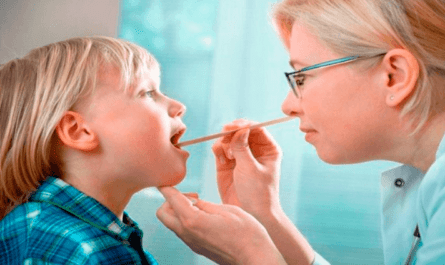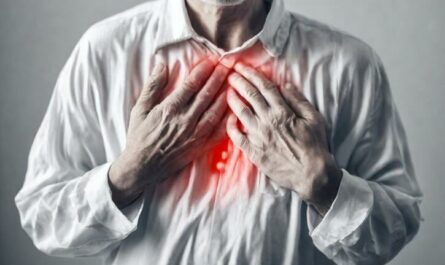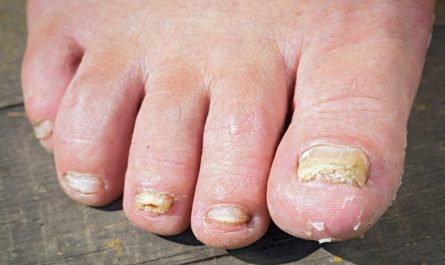Chills without fever can be a perplexing and even frightening experience, especially if you don’t know what’s causing them. In some cases, chills without fever may be caused by an infection, such as the flu or a sinus infection. Other possible causes may include an allergic reaction, dehydration, or medication side effects. Luckily, there are several natural remedies available that can help banish the chills without the need for medication. This article will discuss 10 common causes of chills without fever and treatment.
Chills Without Fever: What Are They?
Chills, also known as rigor, are a sudden feeling of cold accompanied by shivering and goosebumps. Typically, chills occur as a response to a rise in body temperature during an infection or illness, but they can also manifest without an elevated temperature.
Chills without fever can be caused by various factors such as anxiety, exposure to cold temperatures, hormonal changes, or underlying medical conditions. It’s essential to identify the root cause to address and alleviate the chills effectively.
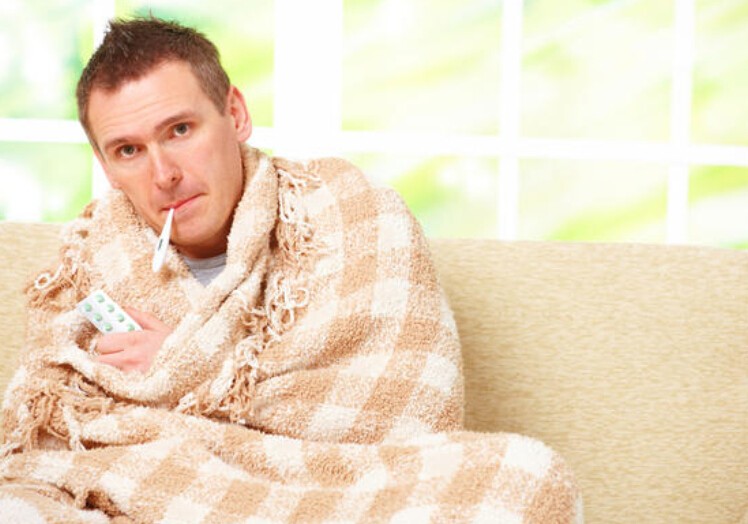
10 Common Causes of Chills Without Fever
There are several potential causes for chills without fever. Here are some common ones:
1. Exposure to Cold Temperatures
One of the most common causes of chills without fever is exposure to cold temperatures. When your body senses a drop in its core temperature, it triggers a response known as thermoregulation. This process involves involuntary muscle contractions, or shivering, which generate heat to warm the body back up.
Chills can occur in various cold environments, such as:
- Being outside in cold weather without proper insulation
- Swimming in cold water
- Staying in an air-conditioned room for an extended period
- Wearing damp or wet clothing
In most cases, these chills are temporary and should subside once you remove yourself from the cold environment or add layers to stay warm. However, prolonged exposure to cold temperatures can lead to more serious conditions like hypothermia.
2. Hypothyroidism
Hypothyroidism, a condition in which the thyroid gland doesn’t produce enough hormones, can cause sensitivity to cold temperatures and frequent chills. The thyroid hormones play a crucial role in regulating metabolism and body temperature, so a deficiency can disrupt these processes.
Other symptoms of hypothyroidism may include:
- Fatigue
- Weight gain
- Dry skin and hair
- Constipation
- Muscle cramps
- Depression
- Irregular menstrual cycles
If you experience persistent chills along with these symptoms, it’s essential to consult your healthcare provider for proper diagnosis and treatment.
Hypothyroidism is typically treated with synthetic thyroid hormone replacement therapy. It can help restore normal body temperature regulation and alleviate chills.
3. Anemia
Anemia, a condition characterized by a lack of healthy red blood cells or hemoglobin, can also cause chills without fever. Red blood cells are responsible for carrying oxygen throughout the body. When their levels are low, the body’s tissues may not receive enough oxygen, leading to a feeling of coldness and chills.
Other symptoms of anemia may include:
- Fatigue
- Weakness
- Pale skin
- Shortness of breath
- Dizziness
- Headaches
- Chest pain
If you suspect you may have anemia, your healthcare provider can order a blood test to check your hemoglobin levels and recommend appropriate treatment, which may include iron supplements, vitamin B12 injections, or dietary changes.
4. Intense Exercise
Engaging in intense physical activity, especially in cold environments, can trigger chills without fever. During exercise, your body generates heat, and as you cool down, the sudden temperature change can cause your muscles to shiver and produce chills.
This response is typically temporary and should subside once your body temperature stabilizes. However, if the chills persist or are accompanied by other concerning symptoms like chest pain or difficulty breathing, it’s essential to seek medical attention, as it could be a sign of a more serious condition like heat exhaustion or heat stroke.

5. Anxiety and Emotional Stress
Anxiety and emotional stress can also cause chills without fever. When you experience intense emotions, your body releases hormones like adrenaline and cortisol, which can affect your body’s temperature regulation mechanisms.
Other symptoms of anxiety may include:
- Rapid heartbeat
- Sweating
- Trembling
- Shortness of breath
- Nausea
- Dizziness
- Muscle tension
If you frequently experience chills along with these symptoms, it’s essential to address the underlying anxiety or stress through techniques like deep breathing exercises, meditation, or seeking professional help. Cognitive-behavioral therapy (CBT) and certain medications can also be effective in managing anxiety disorders.
6. Malnutrition and Low Blood Sugar
Malnutrition and low blood sugar levels can also contribute to chills without fever. When your body lacks essential nutrients or experiences a drop in blood sugar, it can disrupt various bodily functions, including temperature regulation.
Other symptoms of malnutrition or low blood sugar may include:
- Fatigue
- Dizziness
- Headaches
- Irritability
- Confusion
- Blurred vision
- Rapid heartbeat
If you suspect malnutrition or low blood sugar as the cause of your chills, it’s crucial to address the underlying issue by improving your diet, staying hydrated, and seeking medical advice if necessary. In severe cases, hospitalization and intravenous fluids or nutrition may be required.
7. Medication Side Effects
Certain medications can have chills as a potential side effect. This can occur when starting a new medication, increasing the dosage, or even when discontinuing certain medications abruptly.
Some medications that may cause chills as a side effect include:
- Antibiotics (e.g., penicillins, cephalosporins)
- Antidepressants (e.g., selective serotonin reuptake inhibitors, tricyclic antidepressants)
- Blood pressure medications (e.g., beta-blockers, ACE inhibitors)
- Chemotherapy drugs
- Opioid pain relievers
- Corticosteroids
If you experience chills after starting a new medication or changing your dosage, it’s essential to consult your healthcare provider to determine if the medication is the cause and if any adjustments are necessary. In some cases, switching to an alternative medication may be recommended.
8. Infections and Illnesses
While chills are often associated with fevers, they can sometimes occur before a fever develops, particularly in the case of certain infections or illnesses. Chills may be an early sign that your body is fighting off an infection or illness, even if a fever hasn’t yet manifested.
Some infections and illnesses that may cause chills without fever initially include:
- Influenza (flu)
- Malaria
- Urinary tract infections (UTIs)
- Pneumonia
- Meningitis
- Sepsis
- Lyme disease
- HIV/AIDS
If you experience chills accompanied by other symptoms like body aches, fatigue, respiratory issues, or neurological symptoms (e.g., confusion, headaches), it’s essential to seek medical attention promptly to determine the underlying cause and receive appropriate treatment. Early intervention can often prevent more severe complications.
9. Circulatory Issues
Certain circulatory problems can also lead to chills without fever. When blood flow is restricted or impaired, it can affect the body’s ability to regulate temperature, resulting in a feeling of coldness and chills.
Circulatory issues that may cause chills include:
- Raynaud’s phenomenon (a condition that causes reduced blood flow to the extremities)
- Peripheral artery disease (narrowing of the arteries that carry blood to the arms and legs)
- Anemia (which can reduce the body’s ability to transport oxygen effectively)
- Heart failure (which can impair blood circulation)
If you experience persistent chills along with symptoms like numbness, tingling, or discoloration in your extremities, it’s important to consult your healthcare provider to rule out any underlying circulatory issues.
10. Neurological Conditions
Certain neurological conditions can also disrupt the body’s temperature regulation mechanisms, leading to chills without fever. These conditions can affect the hypothalamus or the nerves that control shivering and heat production.
Neurological conditions that may cause chills include:
- Multiple sclerosis
- Parkinson’s disease
- Stroke
- Spinal cord injuries
- Traumatic brain injuries
If you experience chills along with other neurological symptoms like weakness, numbness, or cognitive impairment, it’s crucial to seek medical attention promptly for proper diagnosis and treatment.
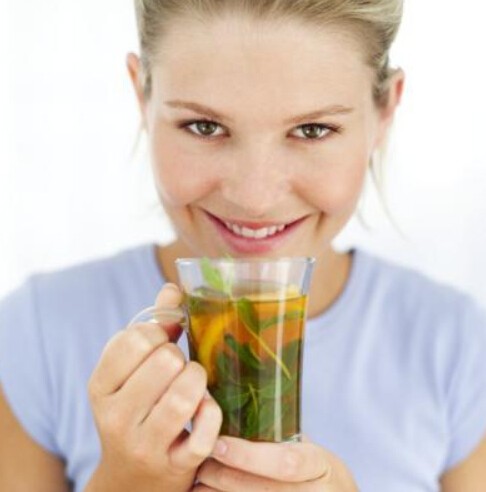
10 Easy Ways to Relieve Chills Without Fever
1. Hydrate, Hydrate, Hydrate
Proper hydration is crucial for maintaining optimal body function and regulating body temperature. When dehydrated, your body struggles to retain heat, leading to chills. Drinking enough water helps replenish lost fluids and keeps your body temperature balanced.
- Carry a water bottle throughout the day and sip on water regularly.
- Set reminders on your phone or use hydration apps to ensure you drink enough water.
- Include hydrating foods such as watermelon, cucumbers, oranges, and strawberries in your diet.
- Avoid excessive caffeine and alcohol consumption, as they can contribute to dehydration.
2. Sip on Soothing Herbal Teas
Herbal teas have various properties that help warm the body and alleviate chills. The following steps will guide you in making a soothing cup of herbal tea:
- Choose your desired herbal tea from chamomile, peppermint, cinnamon, or lemon balm.
- Boil water in a kettle or pot.
- Place the herbal tea bag or loose tea leaves in a cup.
- Pour the boiling water over the tea and let it steep for 5-10 minutes.
- Remove the tea bag or strain the tea leaves.
- Add honey or lemon for added flavor, if desired.
- Sip on the warm herbal tea slowly, allowing its warmth to spread through your body.
3. Warm It Up with Hot Drinks
Hot drinks provide immediate warmth and comfort when you’re experiencing chills. Here’s a step-by-step guide to making a few popular hot beverages:
Hot Cocoa:
- Heat a cup of milk in a saucepan over medium heat until hot but not boiling.
- Add 1-2 tablespoons of cocoa powder and sweeten with sugar or a sweetener.
- Stir until the cocoa powder and sweetener are fully dissolved.
- Pour the hot cocoa into a mug and enjoy while it’s warm.
Warm Milk with Honey:
- Heat a cup of milk in a saucepan over medium heat until hot but not boiling.
- Add 1-2 teaspoons of honey and stir until it dissolves.
- Pour the warm milk with honey into a mug and savor its soothing warmth.
Hot Soup:
- Choose your favorite soup flavors, such as chicken noodles, tomato, or vegetables.
- Heat the soup in a pot over medium heat until it’s steaming hot.
- Pour the hot soup into a bowl and enjoy its warmth while it nourishes your body.
4. Spice It Up with Ginger
Ginger has warming properties that help stimulate blood circulation and alleviate chills. Follow these steps to incorporate ginger into your routine:
- Peel and slice fresh ginger root into thin pieces.
- Add the ginger slices to a cup or teapot.
- Boil water in a kettle or pot.
- Pour the boiling water over the ginger slices.
- Let the ginger steep in the water for 5-10 minutes.
- Strain the tea to remove the ginger pieces.
- Optionally, add honey or lemon for added flavor.
- Sip on the warm ginger tea and feel its warmth spread throughout your body.
5. Harness the Healing Power of Garlic
Garlic possesses antimicrobial properties that can help alleviate chills caused by infections. To incorporate garlic into your routine, follow these steps:
- Peel and finely chop or crush fresh garlic cloves.
- Add chopped or crushed garlic to your cooking, such as soups, stews, stir-fries, or roasted vegetables.
- Alternatively, you can take garlic supplements after consulting with a healthcare professional.
Remember, these remedies may relieve chills without fever, but it’s essential to identify the underlying cause of your chills. If your symptoms persist or worsen, it’s advisable to seek medical advice for proper diagnosis and treatment.
6. Embrace the Comfort of Warm Baths
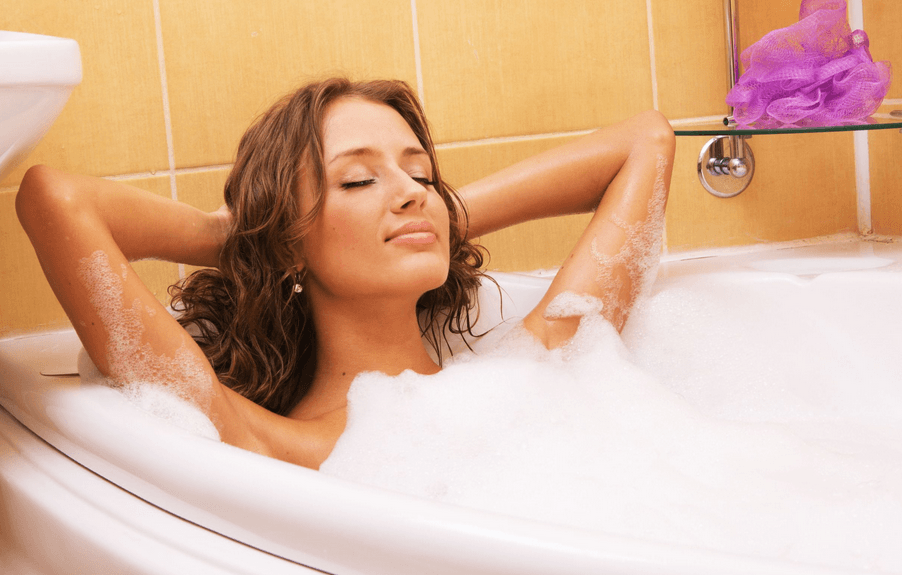
Taking a warm bath can provide soothing relief from chills. Follow these steps for a relaxing warm bath:
- Fill the bathtub with warm water, ensuring it’s a comfortable temperature.
- Add a few drops of essential oils like lavender or eucalyptus for relaxation.
- Immerse yourself in the warm water and let it envelop your body.
- Stay in the bath for 15-20 minutes, allowing the warmth to penetrate your skin and alleviate chills.
- After the bath, pat your body dry with a soft towel and dress in warm clothing to retain the warmth.
7. Utilize Warm Compresses
Applying warm compresses to specific areas can provide localized warmth and alleviate chills. Here’s how to use warm compresses:
- Fill a water bottle with warm water or soak a clean washcloth in warm water.
- Wrap the water bottle or place the warm washcloth on the areas where you feel the chills most intensely, such as your hands, feet, or neck.
- Leave the warm compress in place for 10-15 minutes, allowing the warmth to penetrate your skin.
- Repeat the process as needed to maintain warmth and comfort.
8. Practice Deep Breathing
Deep breathing exercises can help regulate body temperature and reduce chills. Follow these steps for a calming deep breathing routine:
- Find a comfortable and quiet space where you can sit or lie down.
- Close your eyes and take a slow, deep breath through your nose, filling your lungs completely.
- Hold your breath for a few seconds, then exhale slowly through your mouth, releasing all the air from your lungs.
- Repeat this deep breathing pattern for 5-10 minutes, focusing on the sensation of the breath entering and leaving your body.
- With each breath, imagine warmth spreading throughout your body, easing the chills.
9. Prioritize Rest and Sleep
Adequate rest and quality sleep are essential for maintaining a balanced body temperature. Follow these steps to prioritize rest and improve your sleep:
- Establish a consistent sleep schedule by going to bed and waking up at the same time every day.
- Create a comfortable sleep environment by keeping your bedroom cool, dark, and quiet.
- Invest in comfortable mattresses, pillows, and bedding that suit your preferences.
- Establish a relaxing bedtime routine that includes reading, taking a warm bath, or practicing meditation.
- Avoid consuming caffeine or engaging in stimulating activities close to bedtime.
- Limit exposure to electronic devices before bed, as the blue light emitted can interfere with sleep.
- Aim for 7-9 hours of uninterrupted sleep each night to support your body’s natural processes.
10. Maintain a Healthy Diet
A well-balanced diet can help regulate body temperature and provide essential nutrients. Follow these steps to maintain a healthy diet:
- Consume various fruits, vegetables, whole grains, lean proteins, and healthy fats.
- Include foods rich in warming properties, such as chili peppers, turmeric, and cayenne pepper.
- Prioritize whole, unprocessed foods over processed and packaged options.
- Limit your sugary and highly processed foods intake, as they can negatively impact your overall health.
- Listen to your body’s hunger and fullness cues, and eat mindfully.
- Consider consulting with a registered dietitian to tailor a diet plan that suits your needs and preferences.
When to Seek Medical Attention
While chills without fever are often harmless and can be resolved by addressing the underlying cause, there are instances when seeking medical attention is necessary:
- Persistent chills lasting more than a few days
- Chills accompanied by severe or concerning symptoms (e.g., chest pain, difficulty breathing, severe abdominal pain, neurological symptoms)
- Chills in infants or young children
- Chills in individuals with weakened immune systems or chronic medical conditions
- Chills after recent travel to areas with infectious diseases (e.g., malaria)
If you experience any of these situations, it’s crucial to consult your healthcare provider for a proper evaluation and to rule out any serious underlying conditions.


